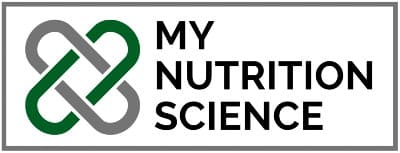Background
When it comes to discussions about skeletal muscle gain, or even retaining muscle throughout the lifespan, consuming dietary protein from animals has always been regarded as superior to plants. “Want to get big, bro? Simple. You must eat steak and eggs, and drink milk”. I’ve heard this type of advice readily distributed by personal trainers and fitness coaches since the day I entered the gym. And although the position that you must consume animal foods to gain muscle is demonstrably false by reference to just a single case of a vegan gaining any amount of muscle mass (naturally, of course), the idea that consuming animal proteins is required for maximal rates of muscle gain is less pseudoscientific. In fact, the apparent necessity of animal proteins for maximal rates of muscle gain has been engrained into the minds of most sport science fanatics for decades. A few different lines of evidence have historically been used to justify this position, and in turn, the standard recommendation for competitive athletes to eat (at least some) animal proteins.
The first line of evidence is that plant-based protein sources are not as freely available to bodily tissues (“bioavailable”) as the great complexity of plant food structures, alongside the co-existence of plant-specific nutrients such as dietary fibre, inhibit plant protein absorption to some degree (1). The second line of evidence is that the relatively lower essential amino acid content of plant proteins, particularly leucine, lysine, and methionine, have a lesser impact on activating anabolic signalling pathways underpinning muscular hypertrophy. For example, most plant-based protein sources have a leucine content of ~6–8% (with some exceptions), whereas animal-based protein sources tend to have a leucine content in the range of 8-12% [2].

There is also a third and more robust line of evidence to complement the prior two, and that is the numerous experimental trials which have consistently shown that the acute postprandial muscle protein synthesis (MPS) response from ingesting 17.5-40 grams of plant protein (typically soy; a high-quality plant source) does not increase MPS to the same extent as equivalent amounts of either whey protein [3] [4], skimmed milk protein [5], or beef protein [6]. This inferior MPS effect of plant proteins occurs in both resting and post-exercise conditions, and these findings have been replicated in both untrained and trained healthy young and older adults. Even though it has always been of personal interest to note that the MPS differences between plant and animal protein sources are not particularly drastic (<20% MPS differences), the findings are usually statistically significant and, as I say, enough to have solidified the dominant narrative of animal protein superiority. Below is just one common illustration used to demonstrate these differences in MPS, or fractional synthesis rate (FSR) to be more accurate here.

However, a couple of recent exceptions to what appeared to be a rule have been published in the last couple of years. For example, using near identical methods to that of prior studies I’ve cited — they are all extremely similar to be honest — Pinckaers et al. [7] found no significant differences in MPS responses between 30 grams of isolated wheat protein versus either milk protein alone or a blend of wheat and milk protein, in young healthy adults. Given wheat is typically viewed as a bottom of the barrel protein source and would never have been put on the same pedestal as animal proteins, this was a particularly interesting finding. An off finding? Maybe, but an interesting one nonetheless considering that soy could not hold up to the likes of milk proteins for years.
It can be argued that isolated wheat protein is very different from the effects of a wheat-based food (such as bread), and so we cannot easily extrapolate that bread is now demonstrably as useful for muscle gain as dairy, but at least the isolated protein fraction might be. We must also consider that the comparator food to wheat here, milk protein, is also an isolated protein from milk, and so it is a fair like-for-like comparison. While we can argue to the cows come home about the differences between isolated proteins versus obtaining these proteins from their wholefood counterparts (as generally seen in the real world), studies like this one, at the very least, help to raise some eyebrows and capture the attention of those nailed into the conventional narrative.

Moreso than wheat, there are also now certain types of plants that have gone a step further and demonstrated superior MPS effects compared to animal proteins. Mycoprotein is what I am referring to for this argument, as it has most certainly changed the game for the MPS research. If you are unaware of mycoprotein, it’s the type of protein derived from the fermentation of fungi spores. Kind of gross, sure, and definitely a very processed type of plant food, sure, but still one that lands on the spectrum of plant-based foods. If we are so willing to accept whey protein as the gold standard of animal protein, a food that requires the curdling and straining of milk, then I see no reason to reject mycoprotein as the gold standard of plants. In any case, the latest research behind mycoprotein showcases pretty unique findings, and a recent RCT best demonstrates this from Monteyne et al. [8]. They assessed the MPS response to ingesting a single bolus of 31.5 grams of mycoprotein compared with a leucine-equivalent milk protein, in rested and exercised muscles of trained males. And, to much surprise, mycoprotein stimulated MPS rates to a significantly greater extent when compared to milk protein. A novel finding in the plant versus animal protein debates. What may also be considered strange is that this superior effect occurred despite mycoprotein causing a smaller and slower postprandial accumulation of amino acids into the bloodstream, suggesting that external factor(s) beyond our current knowledge could be modulating the rise in MPS outside of amino acid kinetics. Protein researchers speculate the enhanced effect was likely the result of a potentiating effect of consuming protein alongside other anabolic-enhancing nutrients found in mycoprotein, although I do not find this argument convincing. Mycoprotein is not particularly dense in other nutrients known to enhance anabolism, especially at just a 31.5 gram dose, and it even contains a couple of grams of fibre which is thought to reduce anabolism per gram of protein consumed. In my opinion, as you can see below, there is probably a lot more to be said for the fact that pre-ingestion levels of FSR in the mycoprotein group were clearly lower than that of the milk group, and thus there was more room for an increase in MPS from dietary protein ingestion. The absolute postprandial MPS values were not significantly different.

Muscle Gain Outcomes
Up until now, I’ve overlooked a pretty major point: MPS is very different from actually gaining muscle. Although MPS represents the incorporation of amino acids into skeletal muscle proteins, typically measured only over a short timeframe (<3 hours post-ingestion), this measure alone doesn’t account for rates of muscle protein breakdown, nor does it reflect chronic changes (over weeks to months) in literal muscle gain as measured by either bioelectric impedance (BIA), dual-energy X‐ray absorptiometry (DXA), computed tomography (CT), or magnetic resonance imaging (MRI). For reasons that were neither right nor wrong, protein researchers have generally assumed that acute MPS differences can reliably predict long-term muscle mass changes, but it is now understand this is not necessarily true.
In fact, there have been enough relevant RCTs comparing animal versus plant proteins over the long-term that we now have a meta-analysis specifically looking at lean body mass change in response to these dietary proteins. Lim et al. [9] is the reference here. The inclusion criteria were any RCT tracking changes in lean body mass between what was defined as plant- or animal-based diets, either due to the use of exclusively plant- or animal-based protein supplementation, or due to the majority of daily protein intake coming from either plants or animals. A total of 16 RCTs were included, with a diverse range of studies using different protein sources (whey, casein, dairy, beef, soy, rice, pea), participants (age, sex, and health status), and duration of intervention (2 weeks to 2 years). The results found that animal protein groups had an overall statistically significant increase in percent lean mass when all studies were pooled together; however, no significant difference was found for absolute lean mass. The distinction between percent and absolute lean mass here is critical. Absolute changes in lean mass represent just that–changes in lean body mass–whereas the percent change is possibly confounded by other body composition changes such as bodyfat mass. I would argue that differences for percent lean mass but none for absolute lean mass is basically just saying the animal protein groups either lost more body fat or did not gain as much. It says little about what we are interested in – muscle mass changes.


This being said, there is a valid point to be made for the stratification of age in this meta-analysis, as shown in the images above. Although the overall change in absolute lean mass change was non-significant, the pool of studies using participants under 50 years old did note a significant difference in favour of animal protein. As such, this could be used to argue for the inclusion of animal proteins in younger adults. However, I personally would not rush to such a conclusion, and I would actually strongly suggest against doing so. The reason being that the significance of this result stems almost exclusively from the weight of effect coming from the Hartman et al. [10] and Volek et al. [11] studies, both of which had major issues that require consideration. These issues were first pointed out to me by Matt Madore, another writer for My Nutrition Science. The specific points raised were that, in Hartman et al. [10], the baseline bodyweight of the animal protein group was 4.5kg less than the plant protein group, suggesting the possibility that the plant protein group had less muscle to be gained before the intervention even started, Plus, post-intervention, the animal protein group increased their bodyweight by 0.8% more than the plant protein group. As we know from another recent meta-analysis of RCTs from Tagawa et al. [12] that the effect of dietary protein on lean body mass change is greatly attenuated by bodyweight change (i.e calorie intake matters more than dietary protein), these are both points that cannot be overlooked for Hartman et al [10]. And to continue on the conversation of major study issues, those in Volek et al. [11] are even more apparent. In this RCT, the soy protein supplement used for the plant protein group had a lower leucine content than every other soy protein supplement used in any other study that myself or anyone else I know has seen. The leucine content of the soy protein supplement that Volek et al. used contained 1.3 grams per 20 grams of protein, whereas almost always, soy protein powders contain between 1.5-1.8 grams. I will not speculate about why this was the case, but this difference might explain why the plant protein group in Volek et al. [11] actually lost muscle mass from baseline, which seems incompatible with the fact that the subjects were resistance training and no other (similar) studies have reported this kind of deterioration in muscle mass.
But I digress, as we’re ultimately missing an even more important point. All of the studies included in the Lim et al. meta-analysis used different total daily protein intakes, many of which were fairly low (at least by standards; <1.6g/kg).
This may appear to be a nonsensical point, but it is an extremely important one when we acknowledge that we are moving toward a scientific consensus that any possible differences for muscle mass between plant and animal protein sources become attenuated to essentially zero when total daily protein intake is sufficient – that is, >1.6g/kg/day. If it is the case that there are actually still no clear differences when daily protein intake is <1.6g/kg/day, such as those included in the Lim et al. meta-analysis, this only further supports the noninferiority of plant proteins. And to be clear about this consensus shift, I’m not just referring to consensus among me and my buddies, but also that of protein metabolism experts such as Stuart Phillips.
If we look to the root of this consensus shift, it really stemmed from contrasting results in repeated studies (similar design) by Campbell et al. [13] [14]. They basically conducted a similar study twice, but instead of using a moderate daily protein intake for intervention the first time (0.78g/kg/day), a higher daily protein intake (1.15g/kg/day) was used the second time. Both times they compared a lactovegetarian vs omnivorous diet, and although there were significant differences in lean body mass in favour of the omnivorous diet when daily protein intake was lower, the significant differences were not found when daily protein intake increased. These results inferred that higher amounts of dietary protein can nullify any differences in plant and animal proteins for influencing muscle mass changes.
Not a particularly strong position if we take these two studies alone, but one that a fantastic and recent RCT solidifies by testing it directly. Hevia-Lorrain et al. [15] took 19 untrained vegans and 19 untrained omnivores and compared their body composition changes from a 12-week resistance training program. Habitual protein intake was assessed before the intervention, and plant or animal-based protein supplementation was added to the diet (as necessary) so that each participant reached the 1.6g/kg bodyweight threshold. After the 12 weeks, as you would expect in untrained populations, both groups showed significant increases in muscle mass. But importantly, there were no significant differences between dietary protocols, despite drastic differences in protein sources that comprised the daily protein intake. These results ultimately led to the conclusion that although protein quality may be important for acute postprandial MPS, or when daily protein intake is sub-optimal (<1.6g/kg), a sufficient daily protein intake can nullify any protein source superiorities seen with lower protein intakes.

Now, one of the authors of this study, Stuart Phillips, has made the point that the lack of difference between protein sources may be found at intakes <1.6/kg/day, but I still think those who eat a plant-exclusive diet should err on the side of caution (if muscle mass is a personal concern). While it is true no differences may be found below this threshold, and many studies in the Lim et al. meta-analysis support this, I do not think this threshold is completely arbitrary. Most notably, a meta-analysis of protein supplementation from Morton et al. [16] also found a wading effect of protein effectiveness for fat-free mass changes beyond 1.6g/kg/day. Until this intake was achieved, there was a linear benefit to more daily protein, but there was simply a lack of additive benefits from protein supplementation when daily protein intakes surpassed ~1.6g/kg/day. Remember, most of these supplemental studies are using whey protein too, the supposed ‘gold standard’ of amino acid density.

But to avoid being what may appear as overconfident in the lack of differences between plant and animal proteins for this particular outcome, I will leave by mentioning a key point to be mindful of. That is, in the novel Hevia-Lorrain et al. RCT, we should warrant some degree of caution in extrapolating the results to wholefood plant-exclusive diets. We know that some of the concerns surrounding plant proteins are the co-existence of nutrients that may lower their anabolic potential, and it must be said that the vegan group in the aforementioned RCT obtained a significant portion of their daily intake from isolated plant proteins via supplementation (50+ grams per day). Thus, whether the use of plant protein supplements overshadow issues that would otherwise be present without their inclusion is yet to be known with certainty. I would like to see a repeat of this RCT without the use of protein supplements to extend its relevance to a wholefood plant-exclusive diet. I’m sure that some people will be quick to take the position that non-inferiority will be lost if only whole plant foods are used, given it is likely that whole plant foods (beans, chickpeas, lentils etc) are less anabolic than whole animal foods (meat, eggs, dairy etc); however, I do not personally take this view. Actually, I’m quite far away from holding this view. That isn’t because I disagree that whole plant foods are less anabolic than whole animal foods, but rather that I disagree the anabolic properties of a single food actually matters much for chronic muscle gain – there are far more important influencers for achieving a net anabolic state, such as stress-induced anabolic signalling, and total energy and protein intake per day. Also, based on the available evidence, much of which we have covered in this article, there seems to be a daily limit to how much muscle can be gained over any set time period, at least naturally (without performance-enhancing drugs). It appears to be fairly easy to hit this limit, even with foods deemed less anabolic than others. So even if I was to grant that whole plant foods are less anabolic (as indicated primarily by postprandial MPS rates or other measures) than whole animal foods, I still don’t believe this actually matters for the outcome in question. I am more confident in this position after having gone through the individual studies of the Li et al. meta-analysis, as the studies that used none or small quantities of protein supplementation still found no significant differences in absolute lean mass change, regardless of the total daily protein intake implemented.
Final Thoughts
We can begin to more confidently state that any differences between protein sources are likely minimal and possibly non-existent, especially when daily protein intake is sufficient (>1.6g/kg/day). The clear distinction that has always been made between animal and plant proteins for muscle mass changes needs to end. The most recent and robust forms of evidence for the outcome that actually matters do not clearly support animal protein superiority, and anyone claiming there is strong evidence suggesting otherwise is simply not appreciating the literature. I’d like more research to tease out any potential differences between plant and animal proteins for muscle mass changes under different contexts of energy status (deficit, maintenance, or surplus) and in groups with different training status’ (trained versus untrained), even if the differences are minute, but for now there is no reason to speculate further. Train hard, eat enough calories, eat enough protein, and choose your protein sources to your personal preferences.
Please sign up to our email list below.





